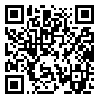BibTeX | RIS | EndNote | Medlars | ProCite | Reference Manager | RefWorks
Send citation to:
URL: http://jdm.tums.ac.ir/article-1-103-en.html
Background and Aims: Moisture contamination of etched enamel during application of sealant is the most frequently cited reason for sealant failure. In previous studies, some hydrophilic bonding agents have been shown to bond to etched enamel after salivary contamination. The purpose of this study was to evaluate the enamelsealant interface following the use of primer on the saliva contaminated and/or moist etched enamel.
Materials and Methods: 40 extracted human incisors were selected. The enamel surfaces were etched for 20 seconds with an acid gel and rinsed for 30 seconds and dried until chalky surface was observed. Teeth were randomly divided into four treatment groups (n=10). Sealant (Deguseal mineral, Degussa) was applied on (1) etched enamel surface as a standard control group, (2) in conjunction with using primer material on moist etched enamel, (3) in conjunction with using primer material on salivary contaminated etched enamel, and (4) on wet contaminated etched enamel surface as a negative control group. Then, the specimens were observed with scanning electron microscopy (SEM) at ×1400 magnification. To evaluate the enamel resin interface, the number of resin tags was counted. Data were analyzed using one-way ANOVA.
Results: The results showed that primer used on moist enamel under sealant had no significantly difference in number and shape of tags in comparison with standard group (P>0.05). Application of primer on saliva contaminated enamel surface under sealant significantly reduced the number of tags and changed the shape and pattern of tags (P<0.001). Following application of sealant on contaminated and etched enamel alone, no resin tags formed.
Conclusion: Application of primer relatively reduced sensitivity to saliva contamination but the pattern was changed and number of tags reduced. Therefore, primer application might be useful whenever the isolation is not possible. However, it should be emphasized that restrict isolation in sealant therapy is recommended.
Received: 2010/02/27 | Accepted: 2010/07/19 | Published: 2013/09/25
| Rights and Permissions | |
 |
This work is licensed under a Creative Commons Attribution-NonCommercial 4.0 International License. |




